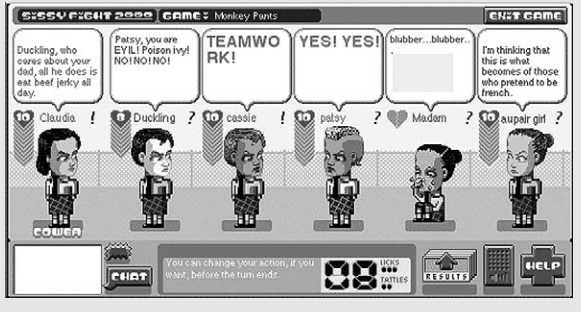created 2025-05-05, & modified, =this.modified
tags:y2025computersgreektheater
Why I’m reading
Came to this book because I’m constantly hearing this Humanities vs. STEM debate in the air with the current admin, “If they’d only read a book.” I always feel this is a flawed kneejerk dichotomy.
The lack of nuance in the discussion always bothers me. I am sustained intellectually by both STEM and Humanities subjects.
I am down on CS at times, so I can understand.
For me, especially growing up, a lot of the joy of learning to code was the artistic side of it, with Processing and different computing art experiments.
I hear this book, making connections to the Theatre, offers a different way of thinking t.
1962 - first modern video game at MIT Spacewar! The game was born out of trying to figure out what “interesting displays” they could create for CRT with pattern-changing software they had.
Interfaces
What is being represented with a computer interface? It is the action co-created by the human and technical forces at play.
John Walker says in the beginning HCI was 1-to-1, the person directly handling knobs on the computer. Punch cards and batch processing replaced direction HCI with transaction mediated by a computer operator. Time sharing and glass teletypes reintroduced direct HCI and lead to menus and command lines. It is a tit-for-tat interaction where a person does something and the computer responds.
But there is more to this, dialogue is not simply linearized turn taking.
Automotive Interfaces
Automobile controls were initially like small boats, steered with tillers and hand controls for power and braking. In the 20th century we see the steering wheel get popular, with the first in 1894 Pancard racer.
The concept of common ground provides a superior model for conversational process, and supports the idea the interface forms a shared context in which both are agents.
Interface metaphors
Provide common ground, anchoring expectations. Desktop metaphor, developed by Alan Kay at Xerox PARC in 1970s (borrowing work from Engelbart). 1984 saw the broad exposure of the metaphor with the Apple Macintosh.
Early on we spoke of the webpage as an enormous book. As it got complicated with links, we saw it as terrain and revisualized in terms of geography. The notion of a portal was based on the idea that a wise provider would protect us from the chaos and provide info.
Use of User
Author advocates for only using User when it is applicable. A player of computer games, is a player. In the context of human-computer interactions, “user” implies a power relationship and a kind of experience that tends to mischaracterize both technology and people.
Engelbart invented the computer mouse, and hypertext, network computers and set the foundations of GUIs, amongst other achievements.
Human Computers
Computers were originally people. They were mostly women whose job was to perform repetitive calculation to compute tables for navigation, tides, planetary positions for use in books.
Direct Manipulation interfaces, gives feeling of direct engagement
- Continuous representation of the object of interest
- Physical actions or labeled button presses instead of complex syntax
- Rapid incremental reversible operations whose impacts on the object of interest is immediately visible
We cognitive scientists now understand that emotion is a necessary part of life, affecting how you feel, how you behave, and how you think. In- deed, emotion makes you smart. - Emotional Design, Norman (2004)
Thought
Norman might say that direct engagement arises from the emotional pleasure of a well-designed affordance; the characteristics of immediacy and lack of fussy procedural steps simply make direct manipulation feel good to us.
The opposite of a difficult device.
The interface (the venue, stage machinery) all fall away as not a matter of direct concern, whereas the actors/audience have real-time engagement with the emotions and the enhanced attention of real-time enactment.
Early music in games was the result of the engineers themselves, as the music had to be directly programmed in the computer chips. Simple sounds give us audio cues to tell us that something “real” is going on.
For the audience, what is happening on the stage is all there is.
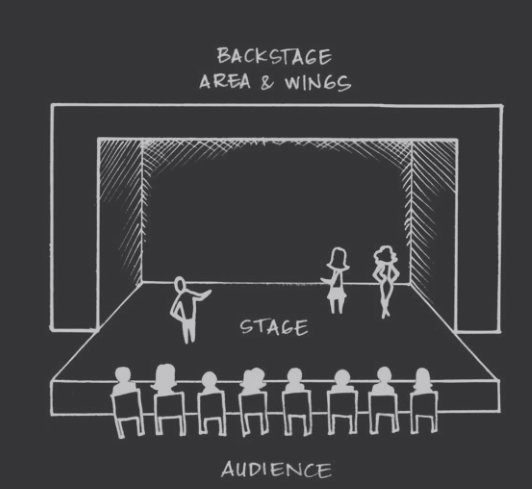 HCI has two categories
HCI has two categories
- Productive - have outcomes in the real world that are somehow beyond the experience of the activity itself.
- Experiential - such as computer games, are undertaken purely for the experience afforded by the activity as one engaged in it.
a printed spreadsheet has real implications.
Seriousness in human-computer activities is a thresholdy thing. “Serious” and “non-serious” or “playful” activities can occur within the same context and at different stages in the same basic activity.
Aristotle identified catharsis as the end cause of a play, a pleasurable release of emotion, specifically those emotions evoked in the play during its runtime.
20th century theorists disagreed, like Bretolt Brecht, who said catharsis was not complete till the audience members take what they have assimilated to work in their lives.
Alan Kay on Computers:
The protean nature of the computer is such that it can act like a machine or like a language to be shaped and exploited. It is a medium that can dynamically simulate the details of any other medium, including media that cannot exist physically. It is not a tool, although it can act like many tools. It is the first metamedium, and as such it has degrees of freedom for representation and expression never before encountered and as yet barely investigated.
Designing HCI is not about interfaces, it is about creating imaginary worlds which extend, amplify, and enrich our own capacities to think, feel and act.
Dramatic Foundations
Chapter wishes to provide a framework of dramatic theory that can be applied to the task of designing human-computer experiences.
Structure
Structure - the arrangement of and relations between parts or elements of something complex: the two sentences have equivalent structures.
Aristotle means the arrangement of elements and their relations (dynamics).
Author is a structuralist: the structural system of a particular work is foundational to its wholeness, intelligiblity and beauty.
Sissyfight
SiSSYFiGHT – in 2000 Eric Zimmerman created this game. It was one of the earliest browser base games with real time interaction. Each player would take the role of a bratty girl vying for social dominance on the playground by reducing the self esteem of the other girls.
The game uses a prisoners-dilemma structure in which players all decide on their actions simultaneously. Teasing only works, for example, if two or more players both tease the same target. At the same time, all of the in-game conversation and negotiation takes place via pub- lic chat. Since the success of your action depends on coordinating your actions with other players, winning a game of SiSSYFiGHT entails very savvy social maneuvering.
Four Causes in Drama
- Formal Cause - the form or shape of what it’s trying to be, (the formal cause of a building is the architect’s notion of the finished house.)
- Material Cause - what it is made of, (for the building stones, concrete, wood etc).
- Efficient Cause - the way a thing is actually made, including the maker and the tools.
- End Cause - its purpose – what it is intended to do once finished, (a building will accommodate for the living etc.)
In the context of theater, formal cause is the plot of the play, the material is the sights and sounds of actors on the stage, the efficient cause is the skills, tools and techniques of humans to finish the play, and the end cause is arousal or emotions (catharsis.)
In the context of HCI
- Formal - the form of what it is trying to be. The representation of action with agents that may be either human-based, computer-based or a combination of both.
- Material - like a play, the enactment, what unfolds in a person’s senses.
- Efficient - the skill and tools of the makers.
- End - what it intended to do in the world.
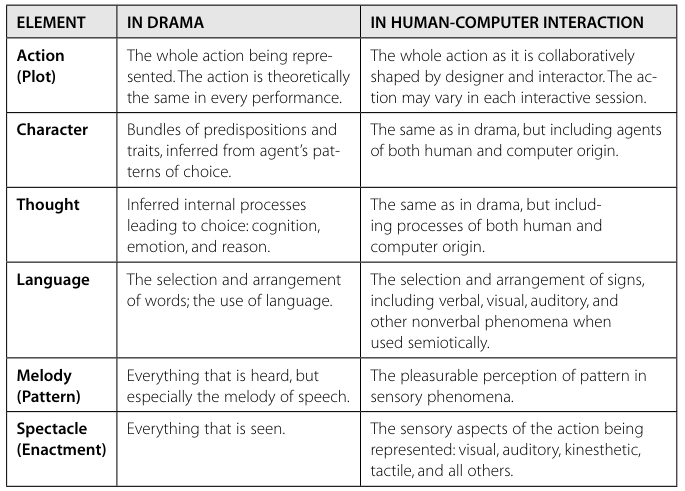
Sensorama Simulator
Morton Heilig is regarded as a pioneer in Virtual Reality. He invented the Sensorama Simulator (also called the Sensorama Machine) in 1957 as part of a larger plan to reinvent cinema, called Experience Theatre. The machine allowed interactors to view a stereoscopic video scene augmented with vibrating handlebars and a moving seat, wind effects, and scents. He created five experiences for the machine including a bicycle ride, a ride on a dune buggy, a helicopter ride over Century City, and a motorcycle ride through New York. The most amazing thing about Sensorama was that it was entirely mechanical; nowadays we think of VR as a computational system.
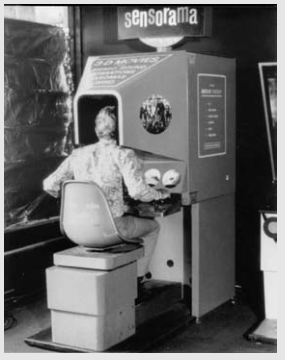
Dramatic Foundations
Author co-founded Purple Moon, a media company devoted to girls. They researched how tween girls founded their identity, depicted in this diagram.
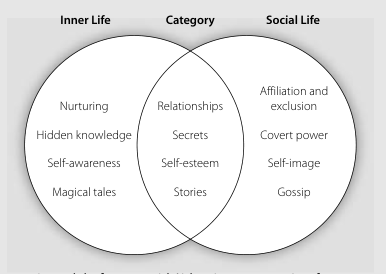
the larger and more coherent the imaginary world, the more > opportunities there are for constructing whole actions within it, as long as the design pro- > vides the necessary affordances for participation.
Dramatic Interactors
Filling our gaps necessarily:
Lord of the Rings Online (LotRO, launched in 2007) employs similar structures that necessitate collaboration. Player-characters have vocations and talents, and most quests cannot be completed by a solo player because they don’t have the requisite talents. For example, the “vocation” of the player-character consists of two talents that go together and one that does not. A Tinkerer, for example, can fi nd ore, make jewelry, and collect wood. She can’t make anything out of wood, but someone who can will trade her for it.
Constraining how or whether people can introduce new potential into a dramatic interaction is essential in the creation and maintenance of dramatic probability.
Character serves as a constrain system.
Persona has its origin in Latin, meaning Mask. We often present one true Persona in public, one in private or between close friends. Author prefers to believe the later is closest to their true self.
Design Heuristics
McLuhan observes new media begins by consuming old media as its content.
- Think of computer as a medium, not a tool.
- Interaction should be couched in the context of the representation - its objects, environment, potential and tools.
- Interface metaphors have limited usefulness. What you gain now, you will have to pay for later.
- alternatives - establish causality and probability, effective representations of objects require a sensory component, an object or action must be self-disclosing in context.
- Focus on designing the action. The design of objects, environments, and characters all serve this grand strategic goal.
- Choices for and by interactors can transform possibility into probability for dramatic action later on.
- Groups of interactors with common goals may function as collective characters where group dynamics serve as traits.
- Explore new methods for enabling emotional expression and communication among agents.
- Examine your assumptions and biases. Everybody has some.
- Check your preconceptions and values at the door. You will pick them up later, after you have findings and are ready to turn them into design principles.
- Learn about your audience to gain insights that will help guide you in design.
Let us consider the ‘desktop metaphor,’ that opening screen jumble which is widely thought at the present time to be useful… . Why is this curious clutter called a desktop? It doesn’t look like a desktop; we have to tell the beginner how it looks like a desktop, since it doesn’t (it might as easily properly be called the Tablecloth or the Graffiti Wall). The user is shown a gray or colored area with little pictures on it. The pictures represent files, programs and disk directories which are almost exactly like those for the IBM PC, but now represented as in a rebus. These pictures may be moved around in this area, although if a fi le or program picture is put on top of a directory picture it may disappear, being thus moved to the directory. Partially covered pictures, when clicked once, become themselves covering, and partially cover what was over them before. We are told to believe that this is a ‘metaphor’ for a ‘desktop.’ But I have never personally seen a desktop where pointing at a lower piece of paper makes it jump to the top, or where placing a sheet of paper on top of a fi le folder caused the folder to gobble it up; I do not believe such desks exist; and I do not think I would want one if it did.
